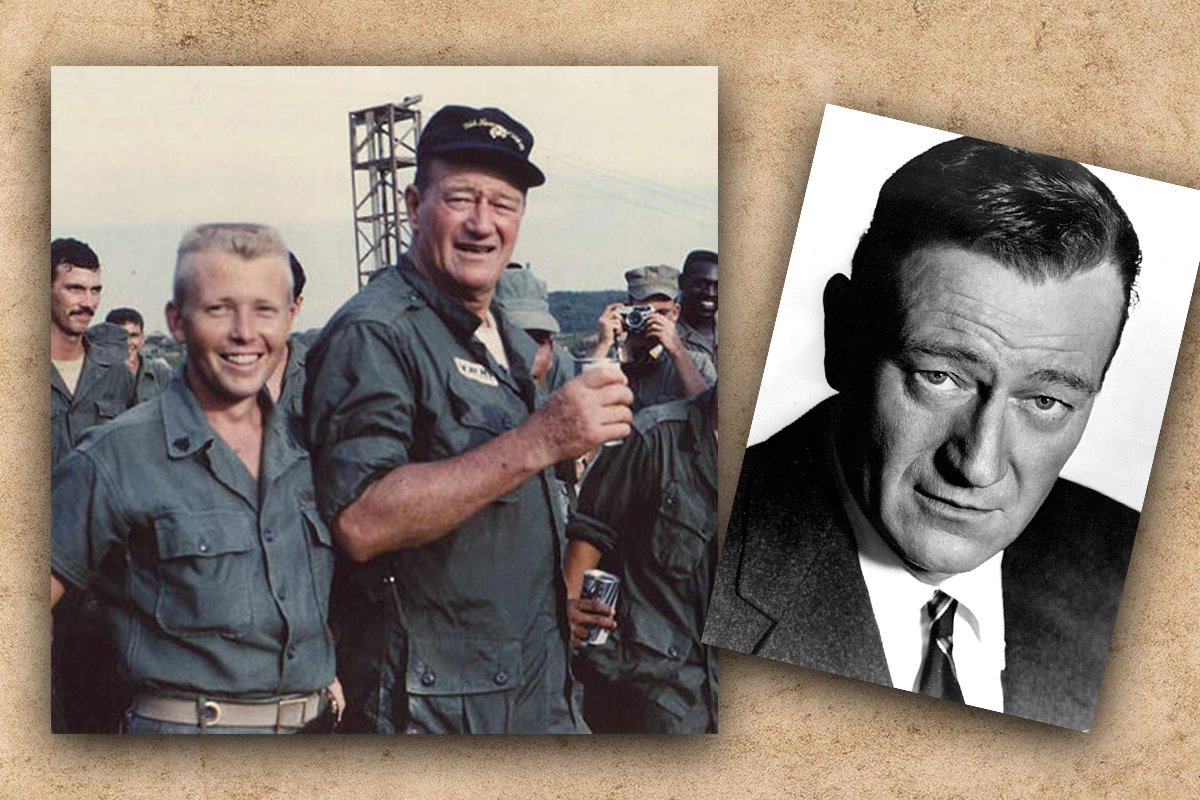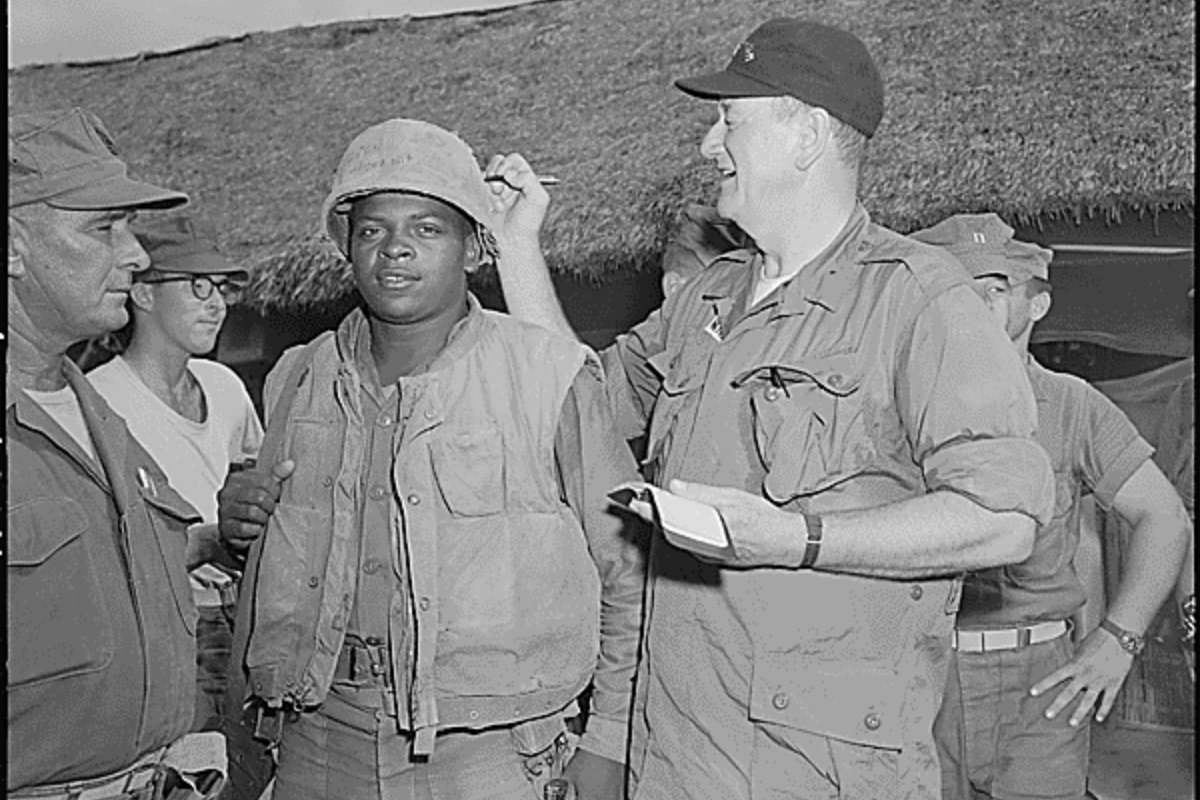
Joseph Stalin saw John Wayne as a threat to Communism’s spread around the world, so he allegedly sent multiple hitmen after the actor. Composite by Coffee or Die Magazine.
It seems like so many dictators just love movies. We all do, but absolute power takes it to a whole new level. Gaddafi had a channel set up just to play his favorite movie – his one favorite movie. Kim Jong-Il kidnapped his favorite actors and actresses to star in North Korea’s movies. Then, of course, the next natural step for these guys is directing movies.
Kim Jong-Il made several films. Benito Mussolini pitched to Columbia pictures. And even Saddam Hussein made a $30 million war epic. But Joseph Stalin was the Soviet Union’s “ultimate censor.”
At the time, global Communism was still very much a growing threat, one Stalin wanted to continue to spread around the world – under Soviet leadership.
He saw how much power and influence films – and the stars in them – held over large audiences. He saw it in Nazi German propaganda during the Second World War and he used it effectively himself to further his own personality cult.
So when he saw John Wayne’s power as a virulent anti-Communist on the rise, he ordered the actor killed and then sent (allegedly) more than one hit squad to do the job. He saw the Duke as a threat to the spread of Communism around the world – and especially in America.
According to the book John Wayne – The Man Behind The Myth, Soviet filmmaker Sergei Gerasimov told Wayne of the KGB plot in 1949. What the Duke and his Hollywood friends did to the hit squad is mind blowing.

Obviously not one to let a thing like communist assassins get him down, Wayne and his scriptwriter Jimmy Grant allegedly abducted the hitmen, took them to the beach, and staged a mock execution. No one knows exactly what happened after that, but Wayne’s friends say the Soviet agents began to work for the FBI from that day on.
But there were other incidents. The book also alleges KGB agents tried to take the actor out on the set of 1953’s Hondo in Mexico. A captured sniper in Vietnam claimed that he was hired by Chairman Mao to take the actor out on a visit to troops there.
Stalin died in 1953. His successor, Nikita Khrushchev, met privately with John Wayne in 1958 and informed him that the order had been rescinded. Wayne told his friends Khrushchev called Stalin’s last years his “mad years” and apologized.
The entire time Wayne knew there was a price on his head, he refused the FBI’s offer of federal protection and didn’t even tell his family. He just moved into a house with a big wall around it. Once word got out, though, Hollywood stuntmen loyal to the Duke began to infiltrate Communist Party cells around the country and expose plots against him.
Wayne never spoke of the incidents publicly.
This article was originally published on We Are The Mighty. Follow @WeAreTheMighty on Twitter.
Read Next:

Coffee or Die is Black Rifle Coffee Company’s online lifestyle magazine. Launched in June 2018, the magazine covers a variety of topics that generally focus on the people, places, or things that are interesting, entertaining, or informative to America’s coffee drinkers — often going to dangerous or austere locations to report those stories.
BRCC and Bad Moon Print Press team up for an exclusive, limited-edition T-shirt design!
BRCC partners with Team Room Design for an exclusive T-shirt release!
Thirty Seconds Out has partnered with BRCC for an exclusive shirt design invoking the God of Winter.
Lucas O'Hara of Grizzly Forge has teamed up with BRCC for a badass, exclusive Shirt Club T-shirt design featuring his most popular knife and tiomahawk.
Coffee or Die sits down with one of the graphic designers behind Black Rifle Coffee's signature look and vibe.
Biden will award the Medal of Honor to a Vietnam War Army helicopter pilot who risked his life to save a reconnaissance team from almost certain death.
Ever wonder how much Jack Mandaville would f*ck sh*t up if he went back in time? The American Revolution didn't even see him coming.
A nearly 200-year-old West Point time capsule that at first appeared to yield little more than dust contains hidden treasure, the US Military Academy said.












